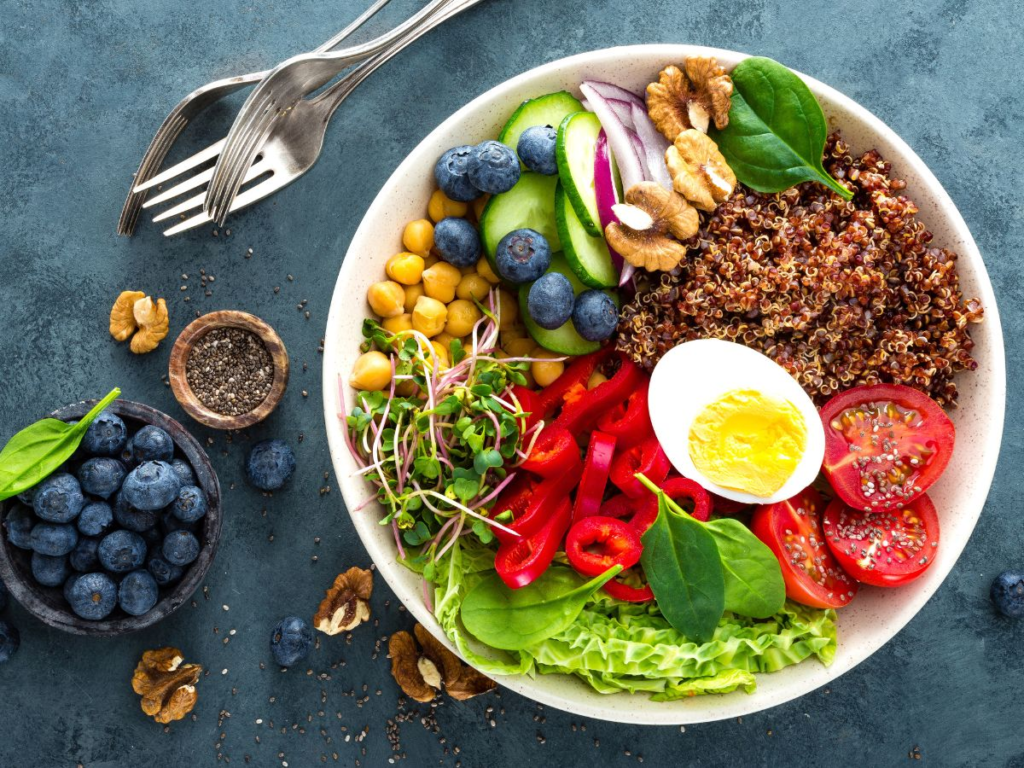Share This Article
The journey into motherhood is a profound one, laden with numerous considerations, with maternal health emerging as a paramount concern. This discourse delves into the pivotal role nutrition plays in mitigating the risk of preeclampsia prior to conception, guiding women towards a nourishing and proactive approach to reproductive well-being.
Reducing the likelihood of preeclampsia before pregnancy necessitates the adoption of a diet abundant in specific nutrients and foods that bolster overall vascular health. Prioritizing a diet rich in antioxidants, prominently found in fruits (especially berries) and vegetables, serves to combat oxidative stress and inflammation, both implicated in the onset of preeclampsia. Consumption of calcium-rich foods such as dairy products and leafy greens aids in the maintenance of healthy blood pressure levels. Omega-3 fatty acids, sourced from fatty fish like salmon and walnuts, play a pivotal role in cardiovascular health and serve to diminish the risk of preeclampsia. Furthermore, the inclusion of whole grains, lean proteins, and legumes while minimizing the intake of processed foods and excessive salt contributes significantly to overall vascular well-being. The adoption of a balanced and nutrient-rich diet before conception emerges as a proactive measure towards reducing the risk of preeclampsia and fostering a healthier pregnancy.
- Understanding Preeclampsia:
a. Defining Preeclampsia:
Preeclampsia stands as a pregnancy complication characterized by elevated blood pressure and organ damage, notably affecting the liver and kidneys. While its manifestation typically occurs during pregnancy, its roots may extend to preconception health, underscoring the necessity for proactive interventions.

b. Preconception Impact:
Research underscores the influence of preconception factors such as maternal health, nutritional status, and lifestyle choices on the risk of preeclampsia. Thus, addressing preconception health becomes imperative in mitigating the likelihood of preeclampsia.
- Incorporating Nutrient-Rich Foods:
a. The Role of Nutrient-Rich Foods:
Essential nutrients form the bedrock of preconception health, with folate, calcium, magnesium, and antioxidants emerging as pivotal in reducing the risk of preeclampsia.
b. Folate for Preeclampsia Prevention:
Folate, a vital B vitamin crucial for fetal development, also plays a role in mitigating the risk of preeclampsia. Foods rich in folate, such as leafy greens, legumes, and fortified grains, support preconception health, thereby fostering a healthy pregnancy.
- Maintaining Adequate Calcium Intake:
a. Calcium’s Role in Blood Pressure Regulation:
Adequate calcium intake exerts a mitigating effect on blood pressure levels, thus forestalling hypertensive disorders like preeclampsia. Ensuring sufficient calcium levels before conception contributes to overall cardiovascular health.
b. Dietary Sources of Calcium:
Dairy products, leafy greens, and fortified plant-based alternatives represent excellent sources of calcium, augmenting calcium intake and fostering blood pressure regulation, consequently reducing the risk of preeclampsia.

- Prioritizing Magnesium-Rich Foods:
a. Magnesium’s Impact on Blood Pressure:
Magnesium, essential for blood pressure regulation and muscle function, holds promise in influencing the risk of preeclampsia. A diet rich in magnesium supports vascular health, thereby mitigating the likelihood of hypertensive disorders.
b. Magnesium-Rich Food Choices:
Natural sources like nuts, seeds, whole grains, and leafy greens abound in magnesium, offering a viable avenue for augmenting magnesium intake and promoting cardiovascular health, ultimately thwarting preeclampsia.
- Embracing Antioxidant-Rich Foods:
a. Antioxidants and Oxidative Stress:
Antioxidants serve as a bulwark against oxidative stress, a key player in the genesis of preeclampsia. An antioxidant-rich diet may serve to diminish oxidative stress, thereby conferring a protective effect before and during pregnancy.

b. Colorful Foods for Antioxidant Intake:
Fruits and vegetables, especially those vibrant in color like berries, citrus fruits, and dark leafy greens, are replete with antioxidants. Integrating these vibrant foods into the preconception diet elevates antioxidant levels, thus fortifying maternal health.
- Balancing Macronutrients for Optimal Health:
a. The Role of Balanced Nutrition:
A judicious intake of macronutrients, encompassing carbohydrates, proteins, and fats, assumes paramount importance in fostering overall health and may influence the risk of preeclampsia. Striking a balance ensures a diverse nutrient profile, thereby bolstering preconception health.
b. Whole Foods for Nutrient Diversity:
Whole grains, lean proteins, and healthy fats constitute the cornerstone of a balanced diet. The inclusion of these whole foods in the preconception diet confers essential nutrients, thereby fostering optimal maternal health.
- Lifestyle Factors and Preconception Health:
a. Weight Management and Physical Activity:
Sustaining a healthy weight through appropriate nutrition and regular physical activity emerges as pivotal in preconception health. Effective weight management positively impacts blood pressure and cardiovascular well-being.

b. Limiting Sodium Intake:
Excessive sodium consumption is correlated with elevated blood pressure levels. Moderating sodium intake by opting for whole, unprocessed foods and minimizing added salt contributes to a heart-healthy preconception diet.
In summation, the voyage towards a healthy pregnancy commences before conception, with nutrition serving as a linchpin in mitigating the risk of preeclampsia. Embracing a diverse array of nutrient-rich foods empowers women to bolster their preconception health, thereby fortifying overall well-being and mitigating the potential ramifications of preeclampsia on pregnancy. Nourishing the body with optimal foods before pregnancy lays the groundwork for a vibrant and healthy maternal journey.
